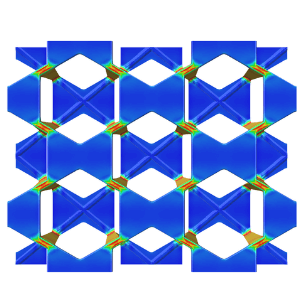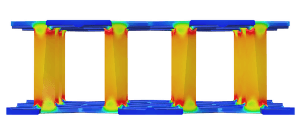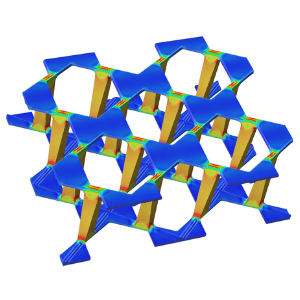CASE STUDY | Drainage Cell Analysis
The Holloway Group is an Australian-owned innovation facilitator that aims to redefine what’s possible to engineer a better tomorrow for their partners, clients, and community. Holloway covers engineering from product design and prototyping to scalable mass manufacturing of products, with over 100 years of product development, product tooling, and manufacturing experience.
THE CHALLENGE
Drainage cells are used for sub-surface water management and drainage in applications such as sports fields, roof gardens, storm water storage, or dispersion. They form a hollow grid structure and are typically made from high strength recycled polypropylene. A permeable material is used to fill the gaps. They are used as a lightweight alternative to heavy aggregates.
Drainage cells are often subjected to high compressive loading. At a minimum, they must handle the weight of wet soil plus any expected loads on the surface, while providing sufficient open volume for effective water drainage.
Holloway Group needed to validate the load capacity of a new drainage cell design before investing in prototyping and physical testing.
THE SOLUTION
The product is designed for maximum bearing load normal to the surface of the cell. The cell is made up from a repeating pattern of columns with webs between for bracing. This is a simple design, ideal for a linear static analysis. As per best practice, hand calculations would be used to verify the FEA results.
The analysis was performed on a small portion of the model that was representative of the repeting pattern present in the cell, using a rigid plate to evenly distribute the load. Initial static analysis found an area at the base of the columns where the stresses exceeded yield. A revision to the design was suggested, adding material where the high stress concentrations were observed.
The new design as analysed and showed stresses were reduced and now safely within material yield.
A buckling study was performed at 1.5x the rated capacity to gain confidence that the cell would pass CIRIA 680 standard testing.
The analysis of the drainage cell gave Holloway the confidence to continue with the next steps of their development process, prototyping and testing. Caliber Design recommended further physical testing, due to the typical uncertainties in the analysis of plastics.



